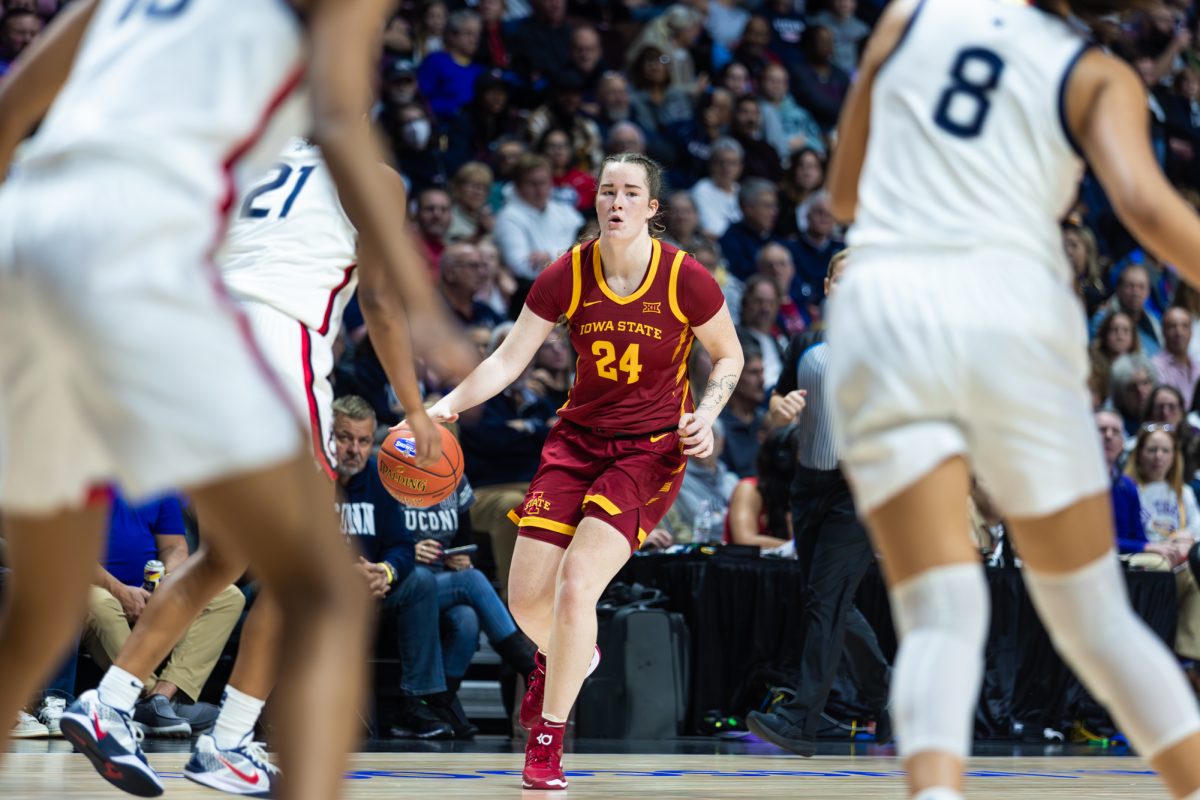College students may still struggle with acne
April 24, 2001
Upon graduating from high school, students have hopes of leaving many things from that time of life behind – school lunch, homeroom, cliques and most importantly, acne.
Unfortunately, for many college students, unwelcome huge red zits still greet them in the mirror some mornings.
“We see a lot of acne in students,” said Marc Shulman, staff physician at the ISU Student Health Center.
Students even may battle acne after college, experts said.
“Acne may persist through the twenties and even into middle age,” said Stuart Kolner, board-certified dermatologist at McFarland Clinic in Ames.
Shulman said acne continues to pester college students because “everyone develops at a different rate.” Some students have not finished their development upon reaching college, he said.
For others, hormonal imbalances such as those that occur with menstrual cycles, steroid use or pregnancy, perpetuate acne, Shulman said. Other reasons for acne’s appearance are big changes in diet, exercise or weight, he said.
The acne that plagues adults may be different than the pimples of youth, said Dr. Diane Berson, assistant clinical professor of dermatology at New York University Medical Center in New York City, in her report, “Acne: It’s Not Just for Kids Anymore” on the American Academy of Dermatology’s Web site, www.aad.org.
“Adolescent acne often develops as blackheads, whiteheads and oily skin in the T-zone (forehead, inner-cheeks, nose, and chin),” Berson said. “Pimples in adults, on the other hand, usually appear on the lower face – such as along the jaw line, on the lower cheeks, chin and neck . Adults may also get acne on their chests and backs. And pimples in adults may be more inflamed and tender than those in teenagers.”
Many things, including heredity, medications, hygiene and, most commonly, changing hormones cause acne, Kolner said.
“When oil glands in the skin are stimulated by hormone changes, they grow, increase their oil output and become blocked by dead skin cells and oil, resulting in a comedone, or a clogged oil gland,” he said.
Kolner said blockage of the oil gland allows bacteria to grow in the gland and its opening to the skin, causing inflammation and pus, he said.
Acne can present itself in many forms, he said, although the most common are blackheads and whiteheads.
“Blackheads are open clogged oil glands where the oil is visible in the opening as a dark plug,” Kolner said. “Whiteheads are closed clogged oil glands, where the plug is under the surface.”
This type of acne is the least harmful, because it tends not to leave scarring behind, Kolner said.
However, inflammatory acne, which involves skin lesions, called nodules, is a different story, he said.
“A nodule is a collection of inflammatory cells that surround the oil gland deeply,” Kolner said. “These are red, deep, tender, long lasting and can cause scarring.”
The good news is there are many medications to prevent and minimize the scarring of acne, Kolner said. The main classes of prescription medication used to treat acne are topical antibiotics, oral antibiotics and oral and topical retinoids, he said.
Antibiotics, such as Cleocin and Erythromycin, reduce the acne-causing bacteria and decrease inflammation, Kolner said. Other products, like benzoyl peroxide and azeleic acid also are anti-bacterial, he said.
Retinoids, such as Differin or Retin-A, operate by reversing the clogging of pores in whiteheads and blackheads, Kolner said.
A new medication, BenzaClin, a topical antibiotic containing benzoyl peroxide, is aimed at preventing inflammatory lesions, he said.
One of the most powerful acne medications, Acutane, is an oral retinoid with a “profoundly beneficial effect on acne,” Kolner said.
However, because of serious possible side effects, including thinning hair, depression, and birth defects, “Acutane is reserved for severe, nodular, scarring acne that has failed all other approaches,” he said.
Over-the-counter products containing benzoyl peroxide, salicylic acid and sulfacetamide also can be helpful in treating acne, Kolner said. Possible side effects of these products include skin irritation and allergic reactions, he said.
Greg Yeakel, pharmacy manager at the ISU Student Health Center, said it is important to be patient and not expect to see a quick difference following treatment.
“It may take a couple of months for some to see results from their acne medications,” he said. “It is important not to become frustrated if you don’t see results right away.”
Shulman said monitoring the skin’s progress can help trace the healing process.
“Take a picture of yourself when you start the acne treatment, and another six weeks later,” he said.
Besides medication, there are things students can do to decrease the risk of acne or make it less severe, Kolner said.
Using a mild facial cleanser can prevent excess oil and clogged pores, he said. However, it is important not to use a buffer or granular scrub, both of which can contribute to inflammation and do not help treat acne.
For men, shaving can irritate skin and cause breakouts, Shulman said. Special shaving lotions located in the African-American grooming section can help reduce breakouts, he said, because shaving-related acne is more common among black men.
Some people lie out in the sun or go to a tanning bed to treat their acne. However, while most people notice a short-term benefit of the acne from ultraviolet light, Kolner said it is a “serious error” to use this as a form of treatment.
“It doesn’t seem to make sense to pursue a short-term cosmetic benefit, such as a brief and mild improvement in acne, only to pay a high price in the long run, such as prematurely leathery skin or even higher price such as skin cancer or death,” he said.
The skin is more photosensitive on acne medication, so ultraviolet light from the sun or tanning beds can be more harmful than normal, Yeakel said.
It is also important to resist the urge to squeeze, Kolner said.
“Popping pimples can increase the risk of scarring and is discouraged,” he said, because “the tiny inflamed sac in the skin that contains the pus is very fragile . If it should rupture under the surface of the skin, as often happens with attempts to pop a pimple, the material inside the sac can cause a vigorous reaction and leave a long-lasting bump or a scar.”
Other important steps in controlling and preventing acne are to eat a balanced and varied diet, get regular exercise and use moisturizers and makeup that are water-based, oil-free or non-comedogenic, which means it will not clog oil glands, Kolner said.
Students ready to get rid of their acne can make an appointment to see a physician at the ISU Student Health Center, Shulman said. Prescriptions for acne medications also can be filled at the ISU Student Health Center Pharmacy, often for a reduced price, Yeakel said.
If acne is causing problems, Kolner said, “there is no reason not to seek help because of the very effective treatments that are available.”






